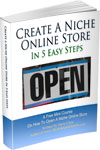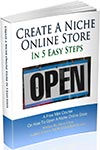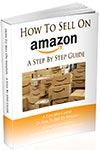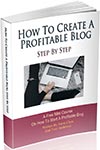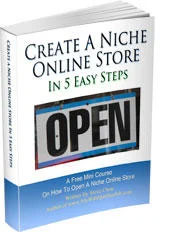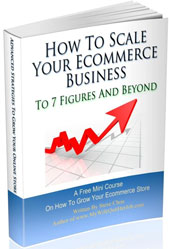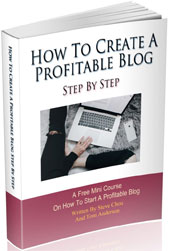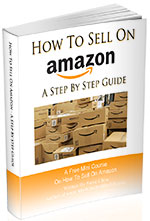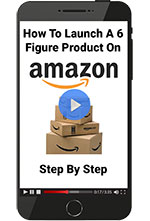Amazon FBA (Fulfillment by Amazon) has changed a lot over the years. It’s no longer just about listing products—you need smart strategies, efficient inventory management, and solid financial planning to stay profitable.
The days of easy wins are gone. Now, you’re dealing with complicated fees, tough competition from both local and global brands, and an algorithm that clearly favors paid ads over organic rankings.
Plus, Amazon’s shifting seller policies mean you’ve got to stay flexible. There’s not much room for mistakes or a “set it and forget it” approach anymore.
That said, Amazon’s massive reach is hard to ignore. Its dominance in eCommerce creates opportunities you won’t find anywhere else—if you’re ready to tackle the challenges.
Are you interested in creating a strong, defensible brand for your products? If so, I put together a comprehensive package of resources that will help you launch your own online store from complete scratch. Be sure to grab it before you leave!
Advantages of Selling on Amazon in 2025
Despite its challenges, Amazon remains one of the most powerful platforms for online sellers due to its massive customer base, global reach, and streamlined fulfillment services. For businesses looking to scale quickly, Amazon provides unmatched resources and exposure.
Let’s dive into the key benefits that make Amazon an attractive platform even in 2025.
1. Access to a Massive Customer Base
The biggest advantage of selling on Amazon is its vast and active customer base. With over 310 million active users globally, including around 248 million in the U.S., Amazon provides access to an audience that no other marketplace can match. That’s nearly 75% of the U.S. population shopping on Amazon regularly.
Amazon generates about $1.4 billion in revenue daily and receives approximately 2.27 billion monthly web visits. According to Statista, Amazon controls around 40% of the U.S. eCommerce market. If you’re not selling on Amazon, you’re potentially missing out on 40% of online shoppers.
What makes this even more appealing is the customer trust Amazon has built over the years. Shoppers often prefer Amazon because of its reliable delivery, easy returns, and customer service. As a seller, tapping into this trust can significantly boost your sales, even if you’re a new brand.
2. Streamlined Fulfillment with FBA
Amazon’s FBA program simplifies the logistics of eCommerce by handling storage, packing, shipping, and customer returns. This allows sellers to focus on product development, marketing, and scaling their business instead of dealing with day-to-day logistics.
With FBA, sellers benefit from Amazon’s extensive infrastructure, ensuring fast and reliable shipping—a critical factor with over 200 million Amazon Prime members expecting quick deliveries. Additionally, Amazon’s Multi-Channel Fulfillment (MCF) allows sellers to fulfill orders from other platforms like Shopify, further streamlining operations.
Imagine running an eCommerce store without having to worry about warehouse management, packing materials, or shipping logistics. Amazon takes care of these operational headaches, giving you the freedom to focus on growing your product line and expanding your brand.
3. International Expansion Made Easy
Amazon makes international expansion seamless, enabling sellers to reach customers worldwide with minimal effort. Through Amazon’s global fulfillment network, you can list products in multiple countries and have Amazon handle international logistics, taxes, and shipping.
With just a few clicks, your products can be available to millions of potential customers globally. This level of reach would require substantial investment and infrastructure if attempted independently.
For example, if you want to expand your business to Europe, Amazon’s Global Selling Program allows you to easily manage listings across multiple countries while Amazon handles language translation, currency conversion, and cross-border shipping. This can be a game-changer for small businesses looking to scale globally without the usual barriers.
4. Hassle-Free Customer Service
Customer service is often a time-consuming aspect of eCommerce, but Amazon simplifies this through FBA. Amazon handles all customer inquiries, returns, and refunds, allowing sellers to focus on business growth rather than support tickets.
This not only saves time but also ensures a consistent and professional customer experience, which helps maintain high ratings and improve product visibility in search results.
Moreover, Amazon’s return policy is designed to make customers feel secure when shopping, which often translates into higher conversion rates for sellers. Even though handling returns can seem like a drawback, the increased buyer confidence often outweighs the occasional return.
Challenges of Selling on Amazon in 2025
While Amazon offers incredible growth opportunities, the platform’s increasing fees, intense competition, and complex policies pose significant challenges for sellers. To succeed, you must be adaptable and strategic in managing these changes.
Here’s an in-depth look at the key challenges Amazon sellers face in 2025.
1. Skyrocketing Amazon Fees
One of the most pressing issues is the rising cost of doing business on Amazon. Over the past decade, Amazon has steadily increased its fees, including referral fees, fulfillment fees, storage fees, and advertising costs.
A notable addition is the inbound placement fee, which charges sellers between $0.27 and $1.58 per unit just to send products to Amazon’s warehouses. Sellers also face penalties for both overstocking and understocking inventory, forcing them to strike a delicate balance to avoid extra costs. On average, FBA fees now consume around 61% of a seller’s revenue.
Consider this: if you sell a product for $20, Amazon’s combined fees (referral, fulfillment, storage, advertising) can easily eat up $12–$14 of that revenue. That leaves you with a razor-thin margin unless your product has a high-profit buffer or you’ve optimized your supply chain to reduce costs.
2. Declining Organic Reach and Rising Ad Costs
Gaining visibility on Amazon has become more challenging due to the decline of organic search traffic. Today, over 50% of Amazon’s search results are dominated by paid ads, meaning sellers must invest heavily in advertising to remain competitive.
Moreover, Amazon PPC (pay-per-click) costs have surged by about 60% in the past four years. This trend shows no signs of slowing down, making it crucial for sellers to develop data-driven advertising strategies to maximize their return on investment.
The challenge isn’t just the rising cost of ads—it’s also the fact that ad conversion rates have dropped for many sellers. As more businesses compete for the same keywords, it becomes harder to achieve profitable returns without continuous optimization and significant ad spend.
3. Unfair Reimbursement Policies
Amazon’s reimbursement policies have become less favorable for sellers. Previously, if Amazon lost your inventory, they would reimburse you for the full retail price. Now, sellers are only compensated for the manufacturing cost of the lost items, excluding shipping and other expenses.
This change significantly impacts sellers of high-value or rare items. Additionally, sellers must either accept Amazon’s often inaccurate cost estimates or submit detailed supplier invoices, raising concerns about data privacy and competitive risks.
For example, if Amazon loses 100 units of a product you sell for $50 each, you might only receive $5 per unit in reimbursement—barely covering your costs. This shift places a significant financial burden on sellers, especially those managing large inventories.
4. Amazon as a Competitor
Amazon is not just a marketplace—it’s also your biggest competitor. The company uses data from third-party sellers to identify profitable products and launch its own private label brands. In many cases, Amazon aggressively promotes its products, even on competing sellers’ listings.
Sellers have reported sharp declines in sales after Amazon introduced competing products at lower prices. This practice makes it essential for sellers to focus on brand differentiation and unique value propositions.
For instance, if you’re selling a popular fitness product, Amazon could analyze your sales data, identify the demand, and release a similar product under its own brand—often priced lower and featured more prominently on search results.
5. Bad Actors and Listing Sabotage
The Amazon marketplace is rife with bad actors engaging in unethical tactics to undermine competitors. Common issues include fake negative reviews, listing hijacking, false infringement claims, and return fraud.
Despite Amazon’s resources, enforcement against these practices remains inconsistent. Sellers often face frustrating experiences with Amazon’s support team, which can be slow to respond and ineffective in resolving disputes.
Imagine waking up to find that your top-selling product has been flooded with one-star reviews from fake accounts or that your listing has been hijacked by a counterfeit seller. These scenarios are not hypothetical—they happen regularly, and resolving them can take weeks or even months.
Is Selling on Amazon Worth It in 2025?
Selling on Amazon in 2025 can be very profitable, but it takes smart planning, flexibility, and a business strategy that isn’t dependent on just one platform. Amazon offers huge reach, but it also comes with big risks.
For new sellers, Amazon is a quick way to get your products in front of millions of potential customers. However, with high fees and tough competition, success isn’t guaranteed. Experienced sellers can still thrive by streamlining their operations, using data to make smarter decisions, and building strong, recognizable brands.
In the long run, Amazon should be just one part of a bigger strategy. To create a sustainable business, it’s important to diversify your sales channels, build your own website, and develop direct relationships with your customers.
Strategies for Success on Amazon in 2025
To succeed on Amazon in 2025, sellers need to take a proactive approach and tackle the platform’s unique challenges head-on. It’s not just about listing products anymore—it’s about staying competitive. Here are some key strategies to stay profitable and grow your business.
1. Focus on High-Margin Products
Given Amazon’s high fees, it’s crucial to focus on products with strong profit margins. High-margin products can absorb rising costs while maintaining profitability. Conduct thorough market research to identify niche products with less competition and higher pricing flexibility.
2. Optimize Inventory Management
Effective inventory management is critical to avoid penalties for overstocking or understocking. Utilize data-driven tools to forecast demand accurately and maintain optimal stock levels. This approach minimizes fees and ensures consistent product availability.
3. Invest in Advertising Wisely
With advertising costs rising, it’s essential to implement strategic PPC campaigns. Focus on high-converting keywords, regularly analyze performance data, and adjust bids to optimize ROI. Consider diversifying ad spend across Amazon DSP, Sponsored Brands, and external channels for maximum visibility.
4. Build a Brand Beyond Amazon
While Amazon is a powerful platform, relying solely on it is risky. Building your own eCommerce website allows you to control your brand, customer relationships, and profit margins. Invest in email marketing, social media engagement, and content marketing to create a loyal customer base outside of Amazon.
FAQ About Selling on Amazon in 2025
Is Amazon FBA still profitable in 2025?
Yes, Amazon FBA can be profitable in 2025, but success requires careful management of fees, inventory, and advertising. Focus on high-margin products and optimize your operations for maximum efficiency.
What are the biggest challenges for Amazon sellers in 2025?
The main challenges include rising fees, increased competition, changing policies, and Amazon’s own private label products. Sellers must adapt quickly to stay competitive.
Should I start an Amazon FBA business in 2025?
Amazon FBA can be a great starting point for new entrepreneurs, but it’s not without risks. If you’re willing to invest time, effort, and resources, Amazon can still be profitable. However, consider diversifying to reduce dependency on a single platform.
Conclusion
Selling on Amazon in 2025 offers both incredible opportunities and significant challenges. While the platform provides access to millions of customers and streamlined logistics, it also comes with rising fees, fierce competition, and unpredictable policy changes.
The key to long-term success is diversification. Build your brand, control your customer relationships, and create a business that thrives beyond Amazon. By doing so, you’ll establish a foundation for sustainable growth and resilience in the ever-evolving eCommerce landscape.
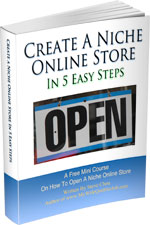
Ready To Get Serious About Starting An Online Business?
If you are really considering starting your own online business, then you have to check out my free mini course on How To Create A Niche Online Store In 5 Easy Steps.
In this 6 day mini course, I reveal the steps that my wife and I took to earn 100 thousand dollars in the span of just a year. Best of all, it's free and you'll receive weekly ecommerce tips and strategies!
Related Posts In Getting Started On Amazon
- Shipping Direct From Alibaba To Amazon FBA – A Step By Step Guide
- Amazon Fulfillment Center Locations & How Sales Tax Works For MCF
- How To Sell Used Items On Amazon (A Step By Step Guide)
- Ultimate Amazon FBA Private Label Guide
- The Truth About Selling On Amazon That No One Talks About

Steve Chou is a highly recognized influencer in the ecommerce space and has taught thousands of students how to effectively sell physical products online over at ProfitableOnlineStore.com.
His blog, MyWifeQuitHerJob.com, has been featured in Forbes, Inc, The New York Times, Entrepreneur and MSNBC.
He's also a contributing author for BigCommerce, Klaviyo, ManyChat, Printful, Privy, CXL, Ecommerce Fuel, GlockApps, Privy, Social Media Examiner, Web Designer Depot, Sumo and other leading business publications.
In addition, he runs a popular ecommerce podcast, My Wife Quit Her Job, which is a top 25 marketing show on all of Apple Podcasts.
To stay up to date with all of the latest ecommerce trends, Steve runs a 7 figure ecommerce store, BumblebeeLinens.com, with his wife and puts on an annual ecommerce conference called The Sellers Summit.
Steve carries both a bachelors and a masters degree in electrical engineering from Stanford University. Despite majoring in electrical engineering, he spent a good portion of his graduate education studying entrepreneurship and the mechanics of running small businesses.


